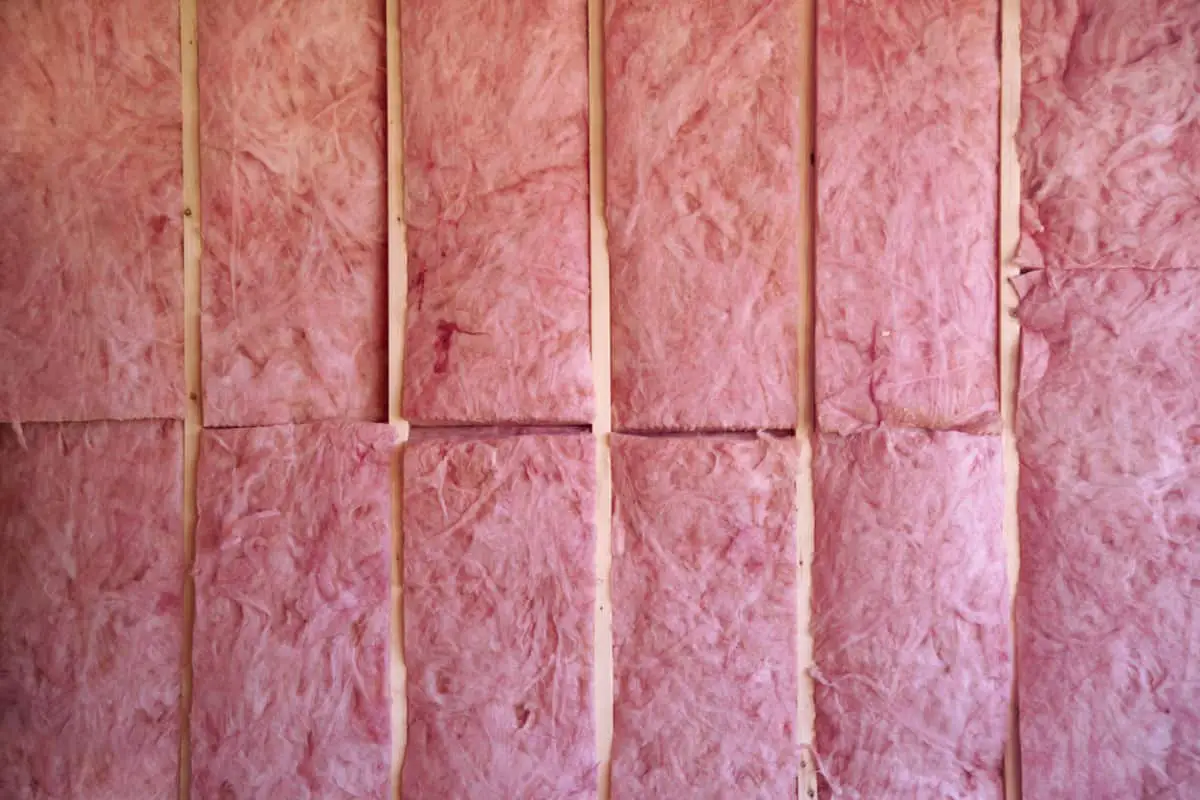Garages are an important space in any home, with the ability to serve a wide array of functions. From car parking to storage, home gym to workshop, garages are truly multipurpose spaces. This can leave the homeowner considering insulating the garage walls like those of the home itself, but is all of that work truly necessary?
There are many pros to insulating garage walls, such as helping control heating and air costs in garages that are used for day-to-day activities and ensuring a consistent temperature in the space. On the flip side, the enormous garage door lets in a lot of outside air when open, so insulation efforts can be easily negated through normal use.
At the end of the day, there is no right or wrong answer as to whether or not insulating the garage walls is a good idea. To come to a decision, it is important to have a firm understanding of how you plan to utilize the space and see if the climate in your area lends itself to making garage insulation a logical choice.
The Pros of Insulating Garage Walls
In general, if you can afford it, adding insulation to any area of your home will have more advantages than disadvantages, and the garage walls are no exception. If you are looking into insulating your garage, the following are some of the benefits you should take into consideration.
1. An Insulated Garage Adds Usable Space to Your Home
For the most part, insulation equates to livability. Well-insulated areas are much more habitable than non-insulated spaces, which will typically be off-limits in times of extreme weather. This is why many early civilizations and animals choose to dwell in caves–the ground provides natural insulation that makes for more comfortable living.
Therefore, by insulating your garage walls, you effectively add hundreds of square feet to your home.
This will allow you to use your garage for something more than a space to park your vehicles or store seldom-used trinkets.
This is an especially relevant consideration in the COVID-19 era. Although millions of people are being forced to work from home, many of these same people do not have sufficient space in their homes to set-up a functional office. As such, some remote workers are turning to their garages as the location for their home office.
In order to protect technology and foster a hospitable work environment, insulated garage walls are a great place to start.
2. Insulating the Garage Helps Control Utility Costs
The idea behind insulation, no matter the type or location, is to help ensure that energy is not transferred. Electric wires are insulated to prevent electricity from flowing to unintended locations, and home walls are insulated to keep heat energy from being transferred between the interior and exterior.
Poorly insulated homes will be faced with enormous electricity bills as the HVAC system is constantly running to keep spaces at an acceptable temperature. Remember, air molecules will flow toward equilibrium, so cool air will want to flow toward warmer exterior temperatures in the summer, while the cold exterior air will want to flow indoors in the winter. Without a sufficient insulative barrier, the HVAC system would be running nonstop to fight off this effect.
Therefore, insulated garage walls can prevent your electric bill from skyrocketing, even if you use your garage only occasionally for things such as ping pong tournaments, small parties, or rock band rehearsals. No need to worry about your air conditioner or heating system working overtime to get the garage at a comfortable temperature during such occasions.
3. Insulation Ensures a Consistent Temperature in the Space
The previous section mentioned that insulating garage walls provides the benefit of lower electric bills by regulating the transfer of heat between the interior and exterior of the space and limiting the amount that the air conditioning and heating system have to run to get the garage at the desired temperature.
In a similar vein, insulated garage walls help ensure that the temperature remains in a consistent range. While insulation itself cannot keep the garage at a constant temperature in extreme conditions without the assistance of heat or air conditioning, it will do a good job of fighting off the extremes and keeping the temperature in a more desirable range.
This is an especially important consideration for garages that are not heated and do not have an air conditioning system. If the garage contains items that are susceptible to freezing in the winter or melting and warping during the hot summer months, then insulated walls can help prevent the garage from getting to these dangerous extreme temperatures in the absence of a heating and cooling system.
4. An Insulated Garage Makes a Better Storage Area
Most garages are used for storage of some kind, even if only for the temporary storage of vehicles, lawn care items, or bikes. Nonetheless, an important consideration when storing items is to ensure that they are stored in a climate-controlled area to prevent drying, cracking, rust, and mildew from forming.
In addition to helping keep the temperature in a consistent range, insulated garage walls can help ensure that the humidity of the garage stays at desirable levels, as well.
5. Insulate Your Home from Garage-Related Fumes
If your home features an attached garage, there is a strong possibility that motors will be running at some point. Whether it be leaving the car running to go back inside and pick up the purse you forgot to grab or checking the idle on the riding lawn mower prior to a day of yard work, the garage is the home base for many firing engines.
While breathing in engine exhaust is unlikely to cause problems in the short term, the continued buildup of carbon dioxide flowing into your home can create health problems over time. In the event of extensive buildup, it can even lead to deadly carbon monoxide poisoning in rare cases.
Having well-insulated garage walls can help prevent the flow of these unwanted byproducts into your home, ensuring the quality of the air in your living spaces.
6. Insulation Provides a Barrier Against Unwanted Pests
Garages are notorious for how porous they tend to be. Whether through the large garage door staying open for too long or the numerous cracks and crevices present in unfinished garage walls, garages have long been famous for housing varmints and pests such as snakes, rodents, and insects.
While the design of garage doors and the frequency with which people and vehicles come and go from the garage prevent it from ever being completely airtight, insulating the garage walls goes a long way toward keeping unwanted critters from making your garage home.
7. Garages With Insulation Are Quieter Spaces
In addition to preventing the flow of heat between the interior and exterior of the space, quality insulation can also prevent the transfer of sound.
As mentioned in a previous section, more and more garages have been converted to home offices in the COVID-19 era. If this is the case for you, not only do unfinished walls foster an inhospitable working temperature, but they do little to block the flow of distracting sounds into your workspace, making garage wall insulation a must.
Furthermore, if you are a person who uses your garage for a workshop in which loud power tools are frequently running or a practice area for your garage band, then insulation is necessary to keep you from disturbing your neighbors and driving those inside your home crazy.
8. Insulation Improves Fire Resistance
One of the dangers of an unfinished garage–specifically those that use a wood framing–is that it may be susceptible to fire damage. As most modern insulation comes with advanced fire-proof qualities, adding insulation to your garage walls can be a great way of protecting your home from fire.
The Cons of Insulating Garage Walls
Although the benefits of adding insulation to your garage door are plentiful, the fact remains that the majority of garages feature unfinished walls. While this may be due to lack of time or an overall low usage rate of the garage, it could be due to one of the downsides that are possible with garage insulation, discussed in the following sections.
1. Frequent Use of the Garage Door Creates Issues
At the top of the list of benefits of insulated garage walls is that they help control utility costs and provide a more stable temperature and climate for the space.
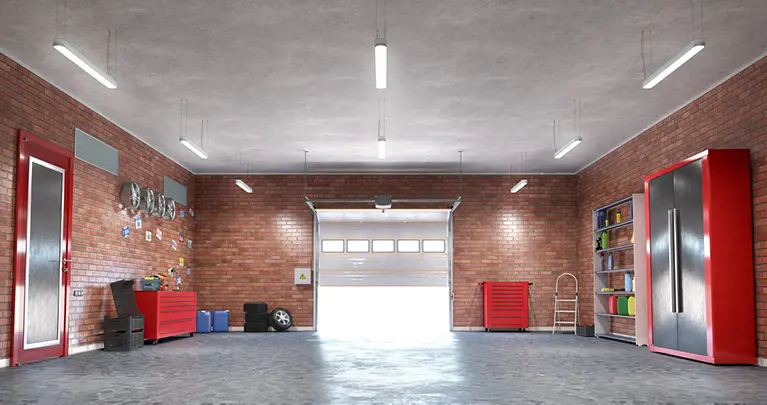
However, these benefits can be severely undermined by opening the garage door. Any open door or window can lead to airflow issues, but these issues are severely exacerbated in garages because:
- Garage doors are several times the size of a regular door.
- The average household opens their garage door roughly 1,500 times per year (more than four times daily).
- A garage door stays open longer than a normal house door, which is quickly open and shut.
These factors combined illustrate how much air is transferred between the garage’s interior and exterior every time the door is open.
As such, many homeowners may fail to see the point of insulating the garage walls if all of the benefits will be largely erased through the normal use of the garage door.
2. The Garage Door Itself Has Insulation Issues
Even if you moderate the amount you open and close your garage door, it is often difficult to keep the garage well-insulated due to the fabrication of most garage doors.
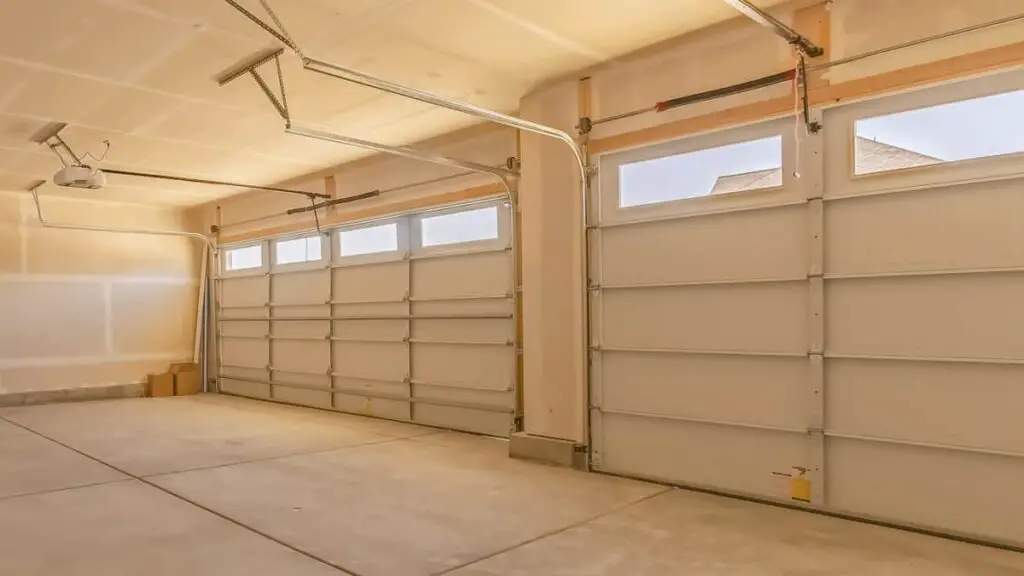
Garage doors must be jointed to roll up and hide away when open and light enough that they do not prematurely damage the torsion springs. The combination of these factors makes garage doors low in insulative quality. Furthermore, they are typically made from a thin material, such as aluminum, vinyl, or processed steel, that does not have strong insulative properties.
3. Insulating the Garage Door Itself
For all of the reasons above, if you are insulating your garage walls, it would be folly not to insulate the garage door simultaneously.
While there are some garage door insulation kits that can make garage doors more airtight by using foam insulation to line the panels that comprise the door, it is not possible to insulate the structural metal ribbing of the door, and metal is an excellent conductor of heat. So, even if your wall insulation is top-notch, it will not be able to provide maximum benefits due to the construction of the garage door.
Finally, when insulating the garage door, you should remember to seal the door along the top, sides, and bottom, as cracks in these areas make ideal entry points for exterior air.
Use an air seal tape along the sides and top of the door that includes an integrated weatherstrip and seal along the bottom of the door with a rubber gasket to cover any gaps between the garage door and the ground.
All in all, the difficulty in insulating the garage door–and the necessity of doing it in conjunction with wall insulation–may be more of a task than some homeowners are willing to undertake.
4. Garage Insulation Can Be Self-Defeating in Warm Climates
One of the prominent features of quality insulation is that it prevents the flow of heat energy. This is a good thing when you want heat to stay in one place, but creates challenges when you would rather the heat dissipate.
As such, if you live in a very warm area, insulating your garage can be a bad idea if you use it to park your vehicles. Running vehicles emit a large quantity of heat–heat that continues to radiate well after the vehicle has been shut off. This is one reason why animals love to sleep under vehicles during the winter months.
If you live in a warm area where this heat radiation is unwanted, garage insulation will not be your friend, as it will keep this heat from your vehicle trapped inside, turning your garage into a veritable sauna. In this case, rather than ensure a stable temperature and reduce air conditioning costs, insulating the garage walls will actually have the opposite effect.
5. Costs of Garage Insulation Can Take Years to Recoup
In addition to enhancing livability, another one of the main reasons to insulate a space is to help control heating and cooling costs.
While adding insulation to a space is not typically one of the more expensive home renovations, even modest costs can be difficult to recoup when insulating garage walls, with the following reasons helping explain why garage insulation does not add up to savings as fast as insulation in other areas of the home:
- The necessity of simultaneously insulating the garage door creates an added expense
- Heating and cooling in the garage may not be required with enough frequency to make the cost of insulation beneficial
- The transfer of air through the normal use of a garage door creates a sort of two steps forward, one step back scenario for energy savings
Therefore, if subsequent savings on energy costs is your primary reason for insulating your garage walls, you may end up being less-than-thrilled with your insulation efforts.
6. Insulated Garages May Need Separate Climate Control
While on the topic of the cost efficiency of garage wall insulation, it is important to consider that the installation of heat and air conditioning units may be necessary as a follow-up measure, as temperature control is a likely motivation for insulating the garage in the first place.
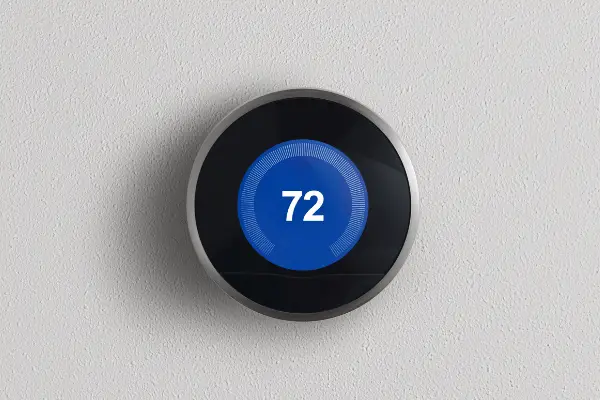
Although it is possible to connect your attached garage to the central HVAC system, it is highly inadvisable, as the flow of low-quality garage air back into your home through HVAC ducts can create serious risks for homeowners who do not have HVAC systems that feature expensive dampers or air scrubbers.
Therefore, it is a great idea to have a separate heating and cooling unit for the garage that is independent of the home’s central HVAC system. If this is cost-prohibitive, it is likely that you will need to look into electric space heaters and fans to aid in your temperature control efforts, which will come with some cost themselves.
7. Garage Insulation Can Be Unsightly When Unfinished
There are three layers that comprise the construction of a building’s walls:
- The framing, which is essentially the component that makes the wall “stand.” For most garages, the framing will be made of wood, but may also be made of metal or concrete
- The insulation, which is a layer added to the framing to prevent the transfer of air, heat, debris, and pests between the interior and exterior
- The finish, which will typically be an additional layer of wood, plaster, or drywall to hide the insulation and make the space more aesthetically pleasing
Most unfinished garages will consist only of the framing, providing a skeleton shelter from nature’s elements. While this is not a particularly appealing look, it is often preferable to framing with exposed insulation, as wall insulation is not meant to be seen.
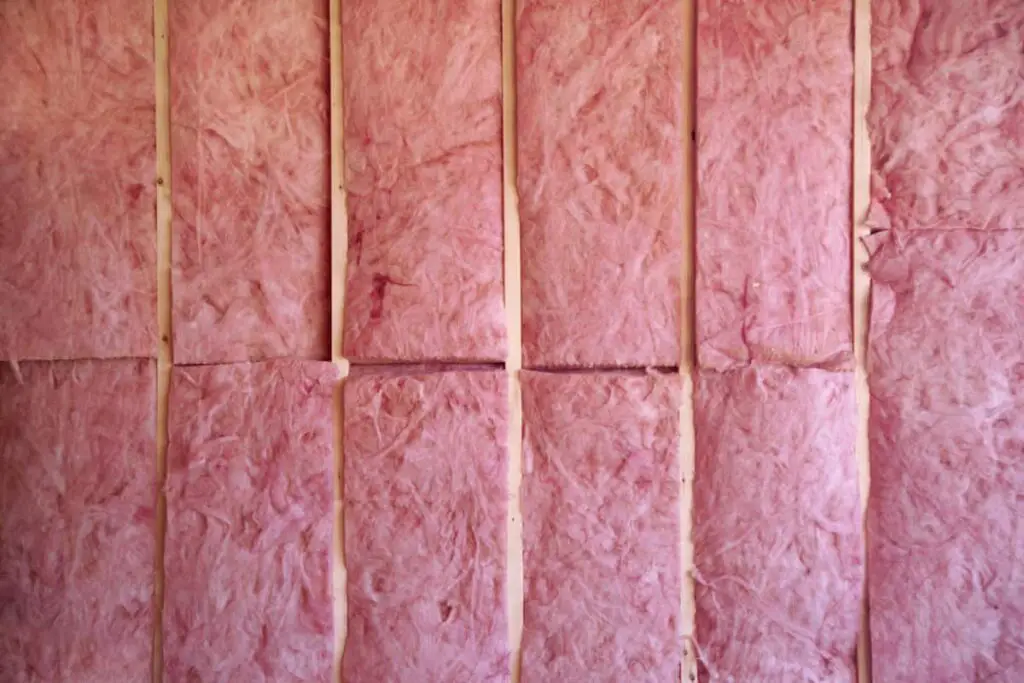
As such, if the appearance of your garage is a high priority for you and you do not have the money to follow through with a finish to hide the insulation, you may be happier waiting for a time in which you do.
When to Insulate Garage Walls
After considering all of the pros and cons associated with garage wall insulation, it really comes down to a matter of personal preference as to whether or not you insulate your garage. For the most part, insulation tends to be a good thing, and the following scenarios are great examples of when homeowners should consider insulating their garage walls.
1. The Garage is Used for Something Other Than Parking Cars
The no-brainer scenario in which you will definitely want to make sure your garage walls have been insulated is when you use the garage for a purpose other than parking cars.
Here is when insulating a garage is a priority:
- If your garage has been converted to your remote work office
- If it is the location of your home gym
- It is a place where you set up your workshop for a creative hobby
In all of these cases, a comfortable temperature is necessary for optimal functionality, so insulating the garage walls will save you money on heating and cooling costs in the long run.
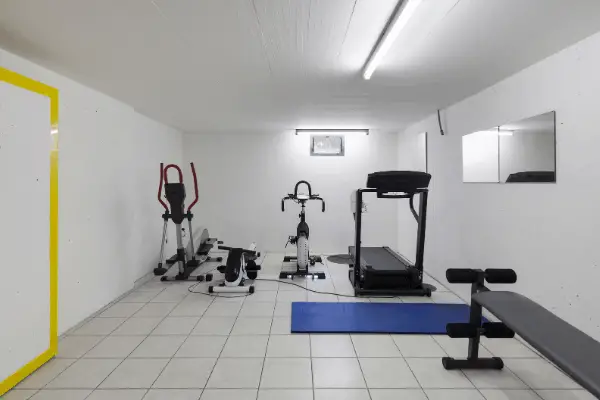
Furthermore, as the garage door is likely to be seldom opened when the garage is employed for such purposes, some of the negatives of garage insulation can be avoided, as well.
2. You Have the Money for an Elective Project
In general, insulation is never a bad thing. However, as future cost savings are one of the main reasons to insulate an area, the return on investment of insulating a garage is not as clear-cut as for other areas of the house, which may make some homeowners feel that it is superfluous.
This is definitely a point you should consider if money is tight, and you are considering insulation as strictly a cost-saving investment.
On the other hand, if you are simply looking to make a better garage that has superior temperature and climate controls and are prepared to pay extra for insulating the door and subsequent heat and air conditioning investment, then insulating your garage walls is a solid choice.
3. You Live in an Area Susceptible to Fires
As an unfinished, wood-framed garage is a high threat to burn, all homeowners in states known for wildfires, such as California and Colorado, should strongly consider insulating their garage walls not only for the safety of the garage but as insurance for the home itself.
When to Avoid Insulating Garage Walls
Even though insulation is typically a good thing, insulating the garage walls is not always a slam dunk, as evidenced by the fact that so many homes feature unfinished garages. The following scenarios are examples of when insulating the garage walls may be superfluous and/or inadvisable.
1. You Live in a Warm Climate
As mentioned, quality insulation impedes the transfer of heat. However, when you live in a hot climate and would prefer to keep your garage cool, the heat radiated from your vehicles will be trapped inside an insulated garage, causing your air conditioning to work overtime to keep the vehicles from turning the garage into an oven.
2. Parking Cars is the Garage’s Primary Purpose
If you have a rare or vintage car that needs elite climate control for preservation, then parking it in an insulated garage makes sense.
However, if you use the garage primarily as a means of keeping your daily driver(s) out of the elements and a place to store your muddy shoes, then garage insulation really is not necessary.
Most of the benefits of insulation will be lost as you frequently open and close the enormous garage door, so in the event that you ever need to have the garage at a more desirable temperature, it may be worth the one-time heating or cooling investment as opposed to keeping a garage constantly insulated.
What Types of Garage Wall Insulation to Use
If you do decide to insulate your garage walls, there are a number of different insulation products from which to choose. Each product will differ in its properties, functionality, and price, with the following options among the products that may suit your needs.
1. Fiberglass Insulation
This is arguably the most common type of insulation found in garages due to its competitive price and strong insulative properties. It typically consists of cut fibers packed into batts and blankets that fit in between the studs of a garage’s framing.
This is one of the better choices if you plan on insulating the garage without finishing it with wood or drywall, as the fiberglass cased in paper and wrapped in a plastic film gives the insulation a sleek appearance and prevents unsightly dust and debris from getting trapped in the fibers.
2. Spray Foam Insulation
This will be the best type of insulation to use if you plan on converting your garage into a home office or gym, as it is an industry leader in R-value (capacity of a material to resist heat flow) and air sealing.
This innovative option is commonly used in the construction of net-zero energy-efficient buildings, so it may be more expensive and/or outside the scope of what you need for a standard garage.
3. Cellulose Insulation
This is another innovative insulation material that is gaining in popularity. Comprised of recycled material, such as newspaper and cardboard, that is treated with a high-insulation, fire-retardant solution, this loose-fill cellulose is blown into a wall’s framing using a special blowing machine that aerates the cellulose and fluffs it up.
Because it is loose-fill, it must be used in conjunction with a finished wall, as it does not have the ability to stand between the frame’s studs on its own.
Conclusion
Garages are used for many purposes, such as parking cars, storing valuables, and, in the COVID-19 era, home offices. With so many manners of employment, the insulative necessity to fulfill each will differ significantly.
If your garage is used for important day-to-day activities in which a stable, comfortable temperature is required, then insulating your garage walls can be a sensible and cost-effective idea.
However, if your garage is mainly used for parking cars, the constant opening of the garage door can offset many of the advantages that the insulation provides, making it a questionable proposition for those looking to insulation as a means of future savings.
In the end, it is important for you to understand how your garage will be used and what benefits you are looking for in insulation before coming to a conclusion as to whether or not it is worth it.

